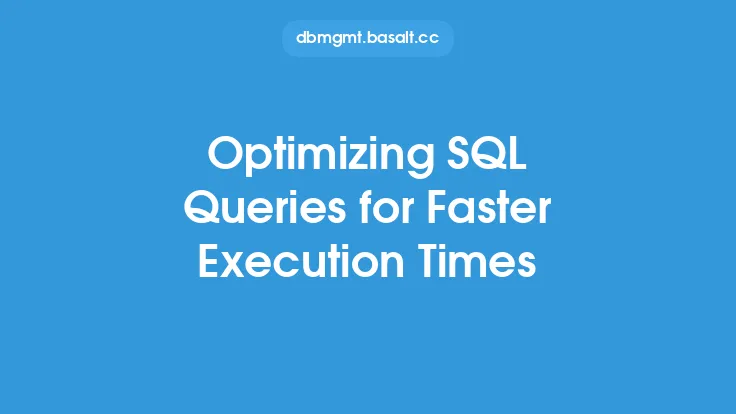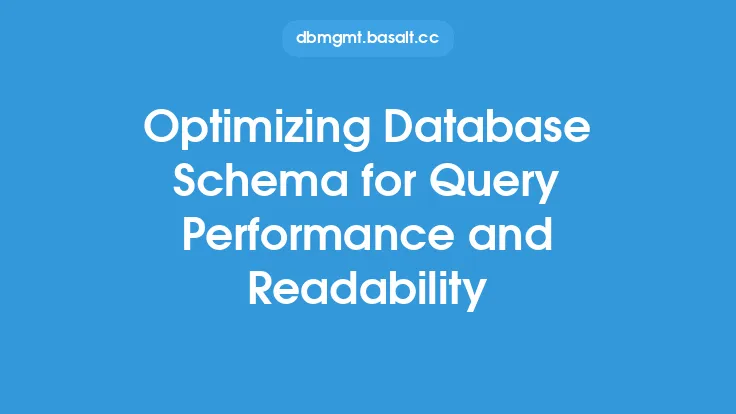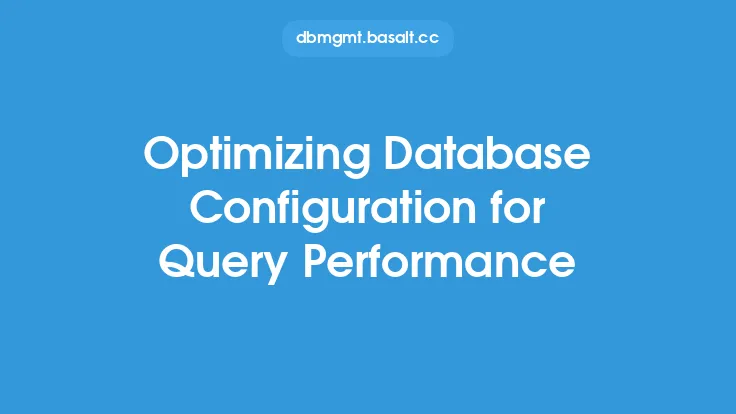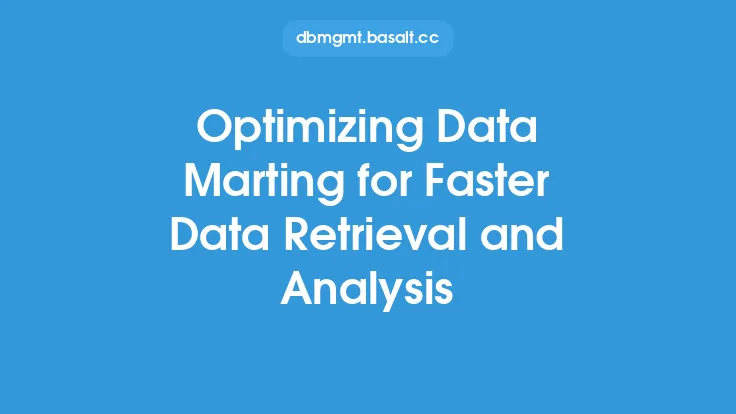When it comes to optimizing database performance, indexing is a crucial aspect that can significantly impact query execution speed. Indexing allows databases to quickly locate and retrieve data, reducing the time it takes to execute queries and improving overall system performance. In this article, we will delve into the world of database indexing, exploring the various indexing strategies and techniques that can be employed to optimize database performance.
Introduction to Indexing Strategies
Indexing strategies are designed to improve the efficiency of data retrieval by providing a quick way to locate specific data within a database. There are several types of indexing strategies, including B-tree indexing, hash indexing, and full-text indexing, each with its own strengths and weaknesses. B-tree indexing, for example, is a self-balancing search tree that keeps data sorted and allows for efficient insertion, deletion, and search operations. Hash indexing, on the other hand, uses a hash function to map keys to specific locations in a database, allowing for fast lookup and retrieval of data.
Understanding Indexing Techniques
To optimize database indexing, it's essential to understand the various indexing techniques available. One such technique is indexing on columns used in WHERE and JOIN clauses. By indexing these columns, databases can quickly locate and retrieve the required data, reducing the time it takes to execute queries. Another technique is to use composite indexing, which involves indexing multiple columns together. This can be particularly useful when queries frequently filter on multiple columns. Additionally, indexing on columns used in ORDER BY and GROUP BY clauses can also improve query performance by allowing databases to quickly sort and group data.
Indexing Data Types
Different data types require different indexing strategies. For example, indexing on integer columns can be done using B-tree indexing, while indexing on string columns may require the use of full-text indexing. Indexing on date and time columns can be done using a combination of B-tree and hash indexing. It's also important to consider the data distribution and selectivity when choosing an indexing strategy. For example, if a column has a high number of unique values, a hash index may be more suitable, while a column with a low number of unique values may benefit from a B-tree index.
Index Maintenance and Optimization
Index maintenance and optimization are critical aspects of database performance optimization. Over time, indexes can become fragmented, leading to decreased query performance. Regular index maintenance, such as rebuilding and reorganizing indexes, can help to improve query performance. Additionally, index optimization techniques, such as index tuning and index merging, can help to reduce the number of indexes and improve query performance. It's also essential to monitor index usage and adjust indexing strategies accordingly. For example, if an index is not being used frequently, it may be beneficial to drop the index to reduce storage and maintenance costs.
Advanced Indexing Techniques
There are several advanced indexing techniques that can be employed to optimize database performance. One such technique is partitioning, which involves dividing large tables into smaller, more manageable pieces. This can improve query performance by allowing databases to quickly locate and retrieve data from specific partitions. Another technique is indexing on views, which can improve query performance by allowing databases to quickly retrieve data from pre-computed results. Additionally, indexing on materialized views can also improve query performance by allowing databases to quickly retrieve data from pre-computed results that are stored in a physical table.
Best Practices for Indexing
To get the most out of indexing, it's essential to follow best practices. One such best practice is to index columns used in WHERE and JOIN clauses, as well as columns used in ORDER BY and GROUP BY clauses. Another best practice is to use composite indexing to index multiple columns together. It's also essential to consider data distribution and selectivity when choosing an indexing strategy. Additionally, regular index maintenance and optimization are critical to ensuring optimal query performance. Finally, it's essential to monitor index usage and adjust indexing strategies accordingly to ensure that indexes are being used effectively.
Conclusion
In conclusion, optimizing database indexing is a critical aspect of database performance optimization. By understanding the various indexing strategies and techniques available, database administrators can improve query performance and reduce the time it takes to execute queries. By following best practices, such as indexing on columns used in WHERE and JOIN clauses, using composite indexing, and considering data distribution and selectivity, database administrators can ensure that indexes are being used effectively. Additionally, regular index maintenance and optimization are critical to ensuring optimal query performance. By employing advanced indexing techniques, such as partitioning and indexing on views, database administrators can further improve query performance and take their database performance to the next level.





